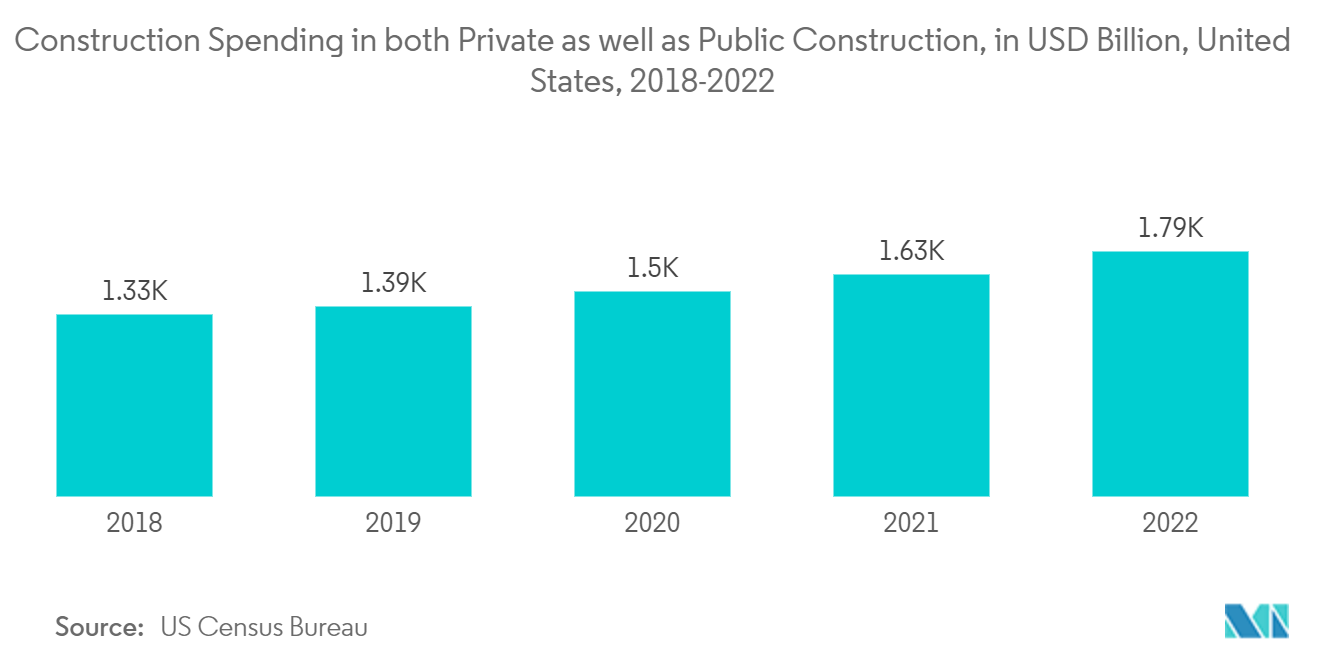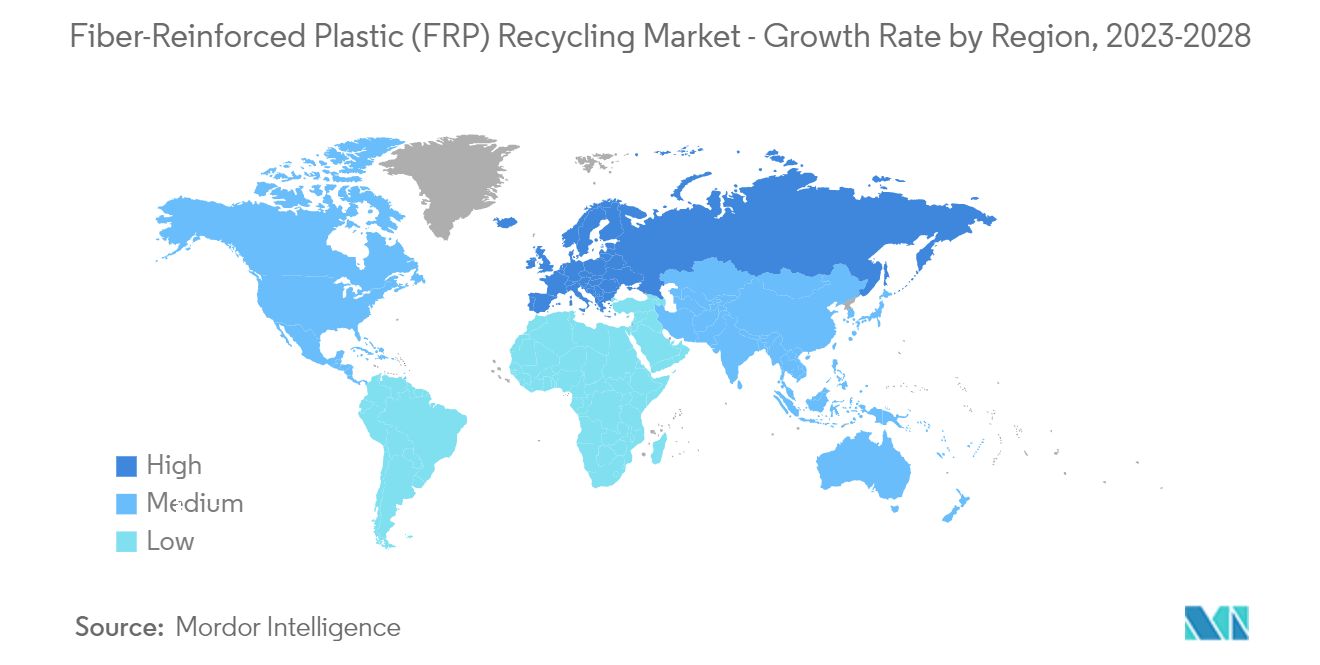Market Trends of Fiber-reinforced Plastic (FRP) Recycling Industry
Building and Construction Dominates the Market
- The construction industry is among the major industries utilizing recycled fiber-reinforced plastics (FRPs) waste for different applications. Utilization of recycled FRPs in the construction industry includes using 100% recycled FRPs and recycled FRPs in any percentage.
- Recycled FRPs are lightweight, easy to install, and possess thermal and stability, electrical insulation, and durability in very corrosive environments, making these recycled FRPs useful for application in the building and construction industry. Recyclates of glass FRPs are the majorly used recyclates in construction, along with recyclates of carbon FRPs in certain significant amounts.
- The common application of recycled FRPs in the construction industry includes its use as an alternative to traditional building materials such as steel and concrete.
- After the coronavirus pandemic, the global construction industry increased to a spending value of around USD 13 trillion, predicted to rise by 3% annually. According to the World Bank, the construction industry spending worldwide in 2022 was USD 13.4 trillion.
- According to the US Census Bureau, in the United States, private construction spending increased in 2022 and was roughly four times more than governmental construction spending. Regarding construction spending throughout the 50 United States, Texas, and California came out on top.
- Recycled FRPs can be used to create structural beams, columns, and other load-bearing elements, as well as non-structural elements such as cladding, panels, and façades, and used in manufacturing prefabricated building components, such as doors and windows.
- Furthermore, the potential applications of mechanically recycled FRP waste in new composite materials, on which a significant amount of research is carried out, include Portland cement, where these recyclates are expected to use as reinforcement, aggregate, or filler replacement.
- All the factors above are expected to drive the building and construction segment, enhancing the demand for fiber-reinforced plastic (FRP) recycling during the forecast period.

Europe to Dominate the Market
- The European region is expected to dominate the global market due to the increasing demand from major countries like Germany, Italy, and the United Kingdom.
- In European countries, including Germany, landfilling is prohibited, so adopting recycled plastics/composites is gaining momentum. Recycled FRPs may be used in the construction, aerospace, and wind power industries.
- Recycled FRPs find applications in windmill blades. Wind power is one of the most important drivers of Germany's transition to renewable energy. The biggest number of decommissioned blades is expected in Germany and Spain, followed by Denmark. Lufthansa permanently decommissioned more than 40 aircraft and axed its Germanwings low-cost arm.
- Wind Europe advocated a waste ban on obsolete wind turbine blades throughout Europe by 2025. The wind business in Europe is aggressively committed to reusing, recycling, or recovering 100% of decommissioned blades. It follows the announcement of ambitious blade recycling and recovery plans by numerous industry-leading companies. A landfill ban may hasten the development of environment-friendly recycling technology.
- According to the Offshore Renewable Energy Catapult, Germany's projected offshore wind turbine decommissioning is more than 10 W, and the projected onshore wind turbine decommissioning is about 80 GW by 2050. These rising decommissions of wind turbines increase the amount of FRP waste from the wind sector. The rising EU framework to ensure effective implementation, landfill, and incineration, coupled with more policies on FRP waste management, is driving the market for FRP recycling.
- In November 2021, for the first time in the United Kingdom, a large initiative to develop wind turbine blade recycling was granted the go-light, costing EUR 2 billion (USD 2.14 billion) over three years. Furthermore, the government initiated strict environmental legislation regarding waste disposal in the country.
- Furthermore, Italy is active in the FRP recycling market, including an established pilot plant. Karborek Recycling Carbon Fibers is a pioneer in Italy and specializes in recycling and recovering carbon fibers. The company's recycled products are majorly used in the aerospace, automotive, industrial, military, and sports industries.
- All the factors mentioned above are likely to significantly impact the demand in the market in the years to come.


